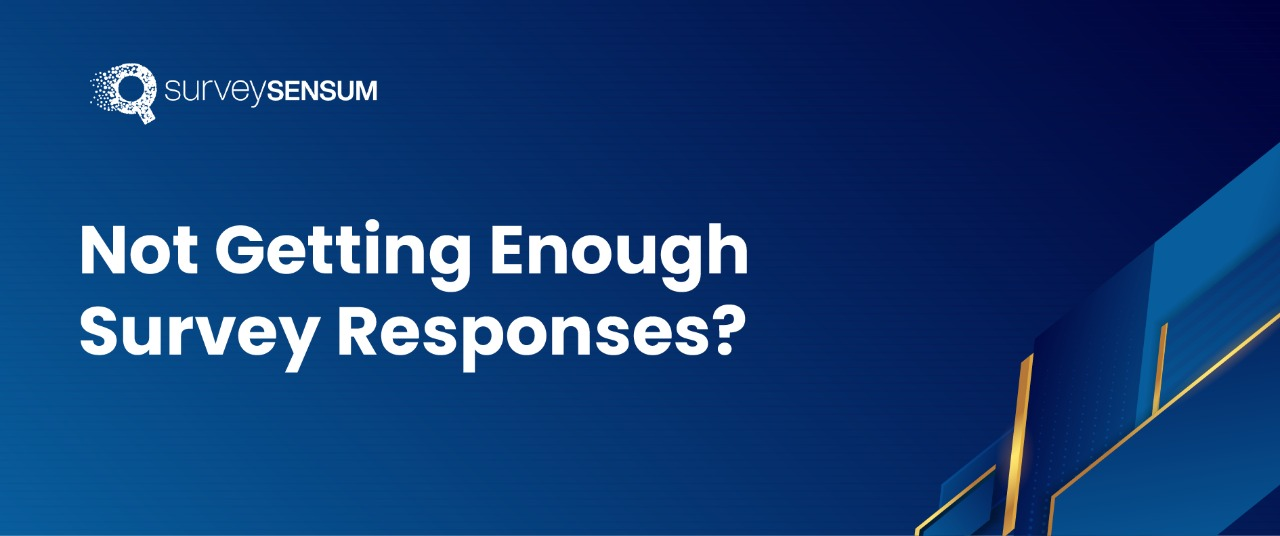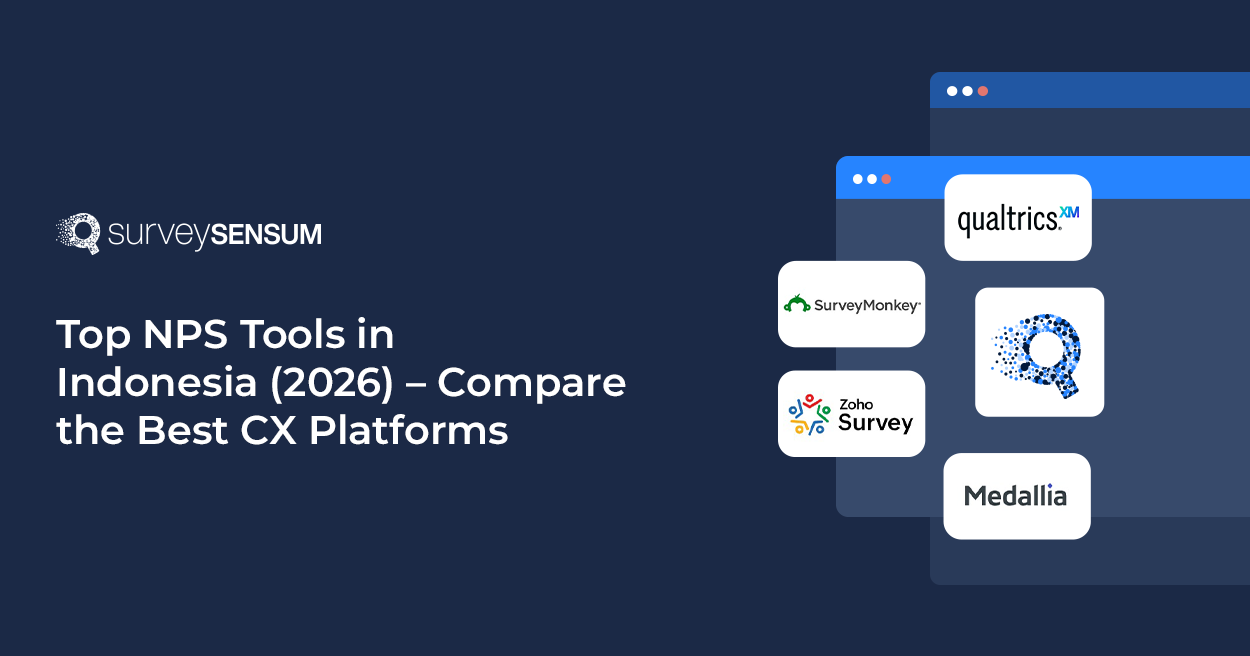

Have you ever wondered why companies like Link Net, a telecommunication giant, have made it a top priority to boost their customer satisfaction scores? Well because increasing this CX metric directly helped them boost their revenue!
Now, you might be wondering, “What exactly is a CSAT score, and how can it help my business?”
CSAT stands for Customer Satisfaction, and it’s a simple yet powerful CX metric that allows you to measure how satisfied your customers are with your products or services.
But the question is – How to calculate CSAT score?
It’s easier than you might think. All you need is robust CSAT software!
But let’s understand, why you need to calculate it in the first place.
Why Should You Calculate Your CSAT Score?
Knowing how to calculate CSAT scores is really important for your business because it does:
- Measure customer satisfaction to gauge the effectiveness of your efforts and identify areas that require improvement.
- Highlight specific areas of your business that need immediate action.
- Capture customer sentiment consistently across different touchpoints.
- Offers a common language to evaluate satisfaction levels and uncover patterns across various customer journeys.
- Aligns teams and departments to give a clear benchmark to assess performance and prioritize improvement efforts.
- Maintain transparency with customers by sharing CSAT scores – showing a commitment to their satisfaction, and instilling trust in your brand.
- Track changes over time by monitoring the effectiveness of their initiatives, measuring the impact of improvements, and understanding the evolving customer needs and expectations.
- Enhance customer loyalty and retention by making customers satisfied and encouraging them to become repeat customers and brand advocates.
Note: Low CSAT scores mean highly unsatisfied customers and vice versa.
Now that you know why you should calculate CSAT score, let’s look at how to calculate it.
How to Calculate CSAT Score Survey?
Here’s the CSAT formula for calculating the CSAT score:
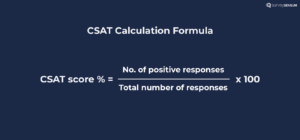
First, identify the satisfied scores on your CSAT scale (1-5 or 1-7).
- If you are using a 1-7 point scale, your happy scores are 6 and 7.
- If you are using a 1-5 point scale, your happy scores are 4 and 5.
- If using a rating scale having 3 emoticons, then the smiley emoticon is your happy score.
[Also, make sure that your customers understand this as well]
Here’s an example of calculating the CSAT Score.
Suppose, you send a CSAT survey on a 5-point scale to your 10 customers who used the gift voucher at your store, to know their experience.
| Customers | 1-2 | 3 | 4-5 |
| Amanda | 3 | ||
| Lily | 5 | ||
| Glordiya | 5 | ||
| John | 4 | ||
| Mark | 4 | ||
| Ross | 2 | ||
| Jenny | 4 | ||
| Kate | 5 | ||
| James | 3 | ||
| Henry | 4 | ||
| Total score of all customers = 39 | |||
Now, to calculate the CSAT score:
- Add all the customer’s scores: 2+3+3+4+5+5+4+4+5+4 = 39
- Divide the total sum by the maximum number of respondents to get the average score: 39/100= 0.39
- Multiply the average score by 100 to convert it into a percentage: 0.39 x 100 = 39%
Your CSAT Score is 39% i.e., the average satisfaction level of the respondents.
If you’re using a rating scale with 3 emoticons, then use the same CSAT score formula.
For example, if 50 customers filled out the survey and only 32 customers clicked on the happy face then your total CSAT score would be:
32/50 x 100= 64%
Your CSAT score is 64%.
How to calculate csat score out of 5?
Imagine you conducted a survey with 100 respondents. The responses on a 5-point scale were as follows:
- 30 respondents rated 5 (very satisfied)
- 20 respondents rated 4 (satisfied)
- 25 respondents rated 3 (neutral)
- 15 respondents rated 2 (dissatisfied)
- 10 respondents rated 1 (very dissatisfied)
To calculate CSAT:
- Count the number of respondents who selected 4 and 5: 30+20=50
- Divide by the total number of responses: 50/100=0.5
- Multiply by 100 to get the percentage: 0.5×100=50%
The CSAT score on the 5-point scale would be 50%.
Now that you’ve calculated your CSAT Score, it’s time to understand if you have a good CSAT score or not.
What is a Good CSAT Score?
A good CSAT score indicates a high level of customer satisfaction. However, the meaning of a ‘good’ score varies across industries and businesses. Generally, a CSAT score
- Above 80% is considered awesome denoting your business has the highest number of satisfied customers.
- 60- 80% is considered good as this range suggests that your business has more satisfied customers.
- 40-60% is considered average with some space for improvement.
- 0-40% is not considered a good score because it shows that your business has more unsatisfied customers than satisfied.
It’s crucial that you interpret CSAT scores alongside qualitative feedback and prioritize continuous improvement to create an effective customer satisfaction strategy and meet their evolving needs.
So far so good?
Let’s delve into knowing CSAT scores by industry.
CSAT Score by Industry
CSAT Scores vary significantly by industry, reflecting differing customer expectations and service standards. Here’s a summary of average CSAT scores across various sectors for 2024:

Source: Retently 2024 CSAT Industry Benchmarks
Now that you know your industry benchmarks, head on to learn how to exactly create a CSAT survey with SurveySensum.
How to Design the CSAT Survey?
You can design a lucrative CSAT survey in 3 simple steps using online CSAT tools like SurveySensum. With SurveySensum, you can personalize surveys with themes and in-built templates as per your brand requirements.
STEP 1: Log in to the SurveySensum portal and go to its ‘Survey Builder’
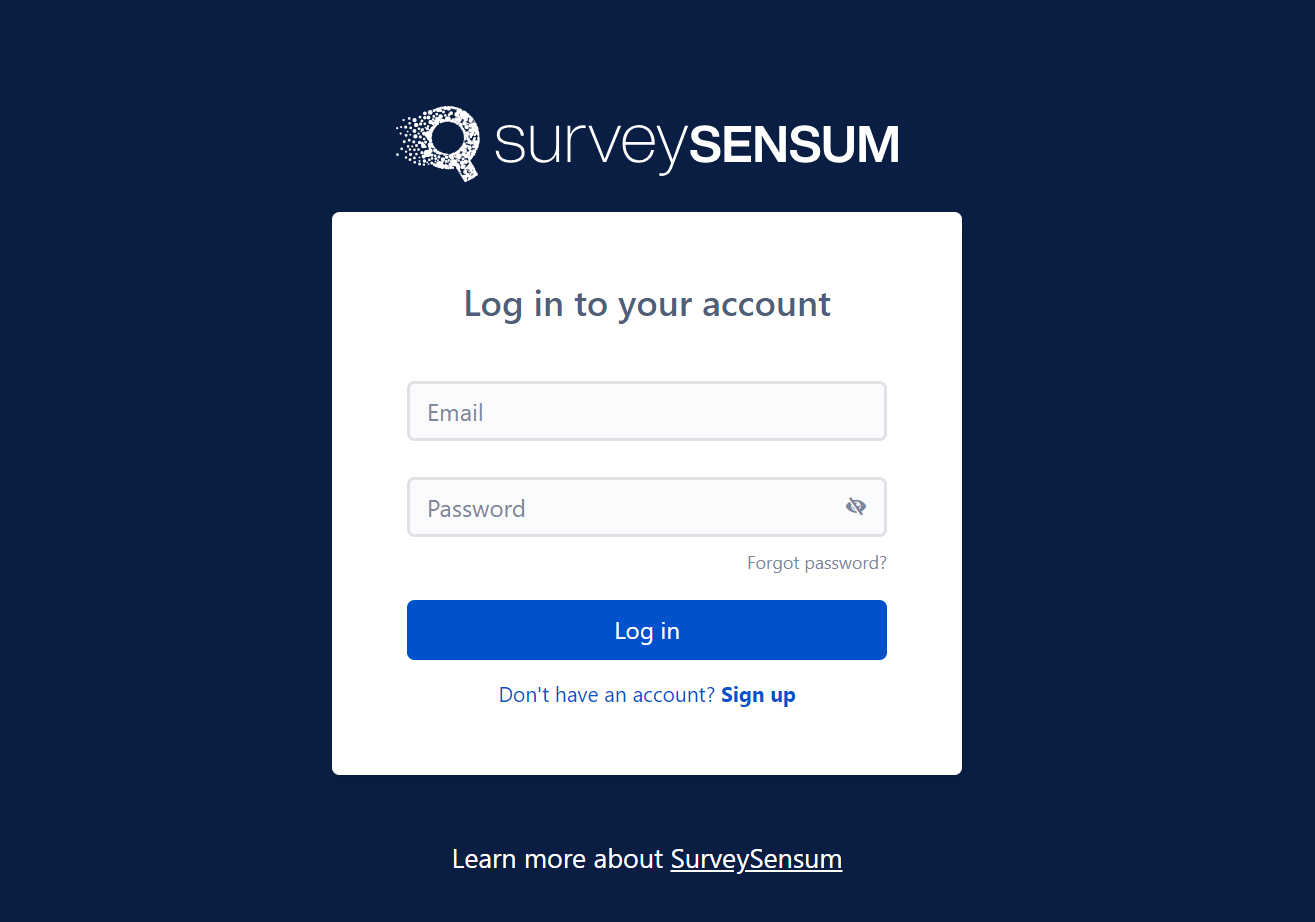
STEP 2: Click on “Create a survey”, and select CSAT in-built survey template.
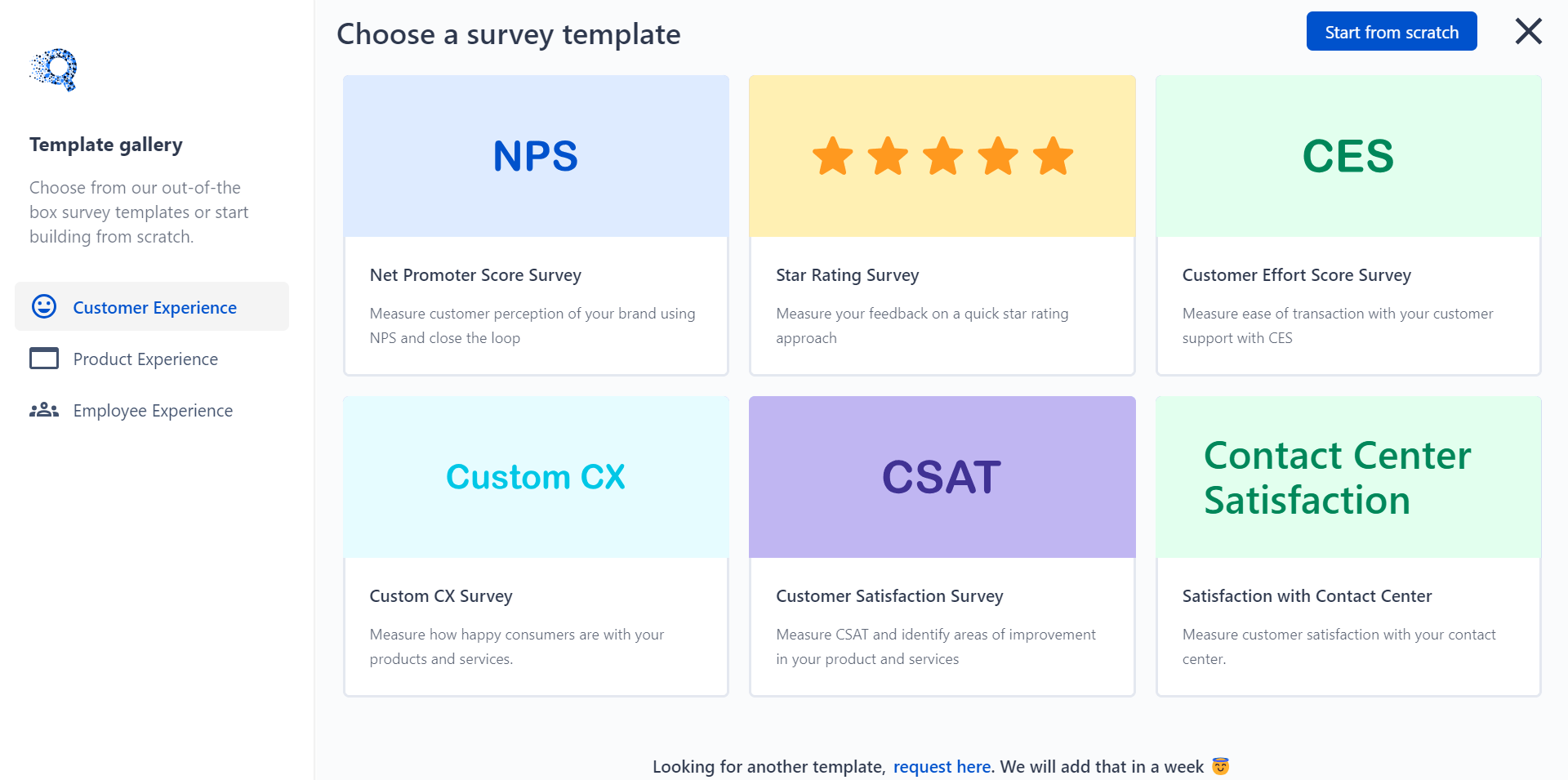
STEP 3: Edit the CSAT template as per your business’ branding and then click on the ”Share” survey button.

STEP 4: After sending out your CSAT surveys, you will receive real-time feedback updates on your dashboard. This allows you to monitor customer satisfaction levels, stay informed, and take timely action to address any issues or improve customer experiences.

STEP 5: But when you start receiving feedback in thousands, analyzing it can be cumbersome. So, utilize Text Analytics. It processes large volumes of text data, identifying key themes, sentiments, and trends in just a few seconds!

Design surveys that prompt users to send in their responses! Launch Your First CSAT Survey and revolutionize your customer experience!
Best Practices to Create CSAT Surveys
Here are some best practices with which you can create effective CSAT surveys:
- Keep it SIMPLE and CONCISE.
- Use a CLEAR RATING SCALE that is easy to understand and provides meaningful insights.
- Ask SPECIFIC QUESTIONS to obtain actionable feedback to identify areas for improvement more effectively.
- Incorporate JOURNEY-BASED SURVEYS to capture feedback at different touchpoints in the customer journey, providing a comprehensive view of the customer experience.
- Ask OPEN-ENDED QUESTIONS to capture qualitative feedback and gain deeper insights.
- Send surveys at the RIGHT TIME and on the RIGHT CHANNEL to gather relevant customer feedback.
- TEST before deploying the survey to ensure its clarity and relevance.
By following these best practices, trust me, your CSAT surveys will yield valuable insights for you.
Now let’s talk about how to collect customer satisfaction data.
How to Collect CSAT Survey Data? – Common Channels
You can collect CSAT data through the following methods:
1. Online Surveys

Send surveys online to gather instant feedback.
To use online surveys, create them with any survey tool like SurveySensum, and send them through the channels where your customers are like WhatsApp surveys.
Advantages of using Online Surveys
- Offers flexibility in survey design
- Gathers real-time data
- Incorporates advanced features like skip logic
- Offers quick data processing and analysis
- Accessibility to a broad audience
- Cost-effective
Disadvantages of using Online Surveys
- Can be susceptible to self-selection bias, resulting in non-representative samples.
- Low response rates can impact data quality, and concerns about data privacy and security can arise.
2. Email Surveys
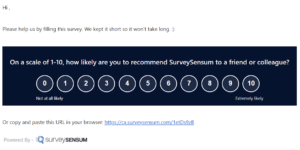
Do you have your customers’ emails?
If yes, then use them now to send personalized surveys right away.
And add the survey in the email body which lets your customers fill out the survey within the email.
Advantages of using Email Surveys
- Personalized communication
- Easy tracking and management of responses
- Reach a large number of customers quickly
Disadvantages of using Email Surveys
- Low response rates due to emails going to spam
- Reliance on the availability and accuracy of email addresses
3. Interactive Voice Response (IVR) Systems
Have you tried IVR yet?
If not, then you must begin because it can catch responses from touch-tone responses or voice recognition as well.
And it is best for those customers who are unable to access the internet or prefer the phone call to give feedback. Also, the system records the gathered feedback to later process and analyze it.
Advantages of using Interactive Voice Response (IVR) Systems
- Immediate feedback collection
- Real-time insights
- Accessible for customers without internet access
- Best for post-interaction surveys
Disadvantages of using Interactive Voice Response (IVR) Systems
- Limited response options, question length
- Potential accuracy issues with voice recognition
- Reliance on phone access and connectivity
You must ensure a representative sample size to gather accurate CSAT customer feedback. This can be achieved by using random or stratified sampling, allowing you to include customers from different demographics, locations, or segments.
By considering these given methods, you can gather reliable CSAT feedback to improve customer satisfaction effectively.
Don’t waste time waiting and collect your valuable customer feedback today with SurveySensum! Collect & analyze CSAT feedback the right way!
Now that you’ve gathered all this feedback, how can you analyze and interpret the CSAT survey results?
How to Analyze the Gathered CSAT Survey Data?
So, you’ve collected a bunch of valuable data through different types of customer satisfaction surveys from your customers.
Now comes the exciting part: analyzing that data to gain insights and drive improvements.
Let’s dive in:
- Organize and Clean the data: Start by organizing your survey responses in a structured manner. Remove any irrelevant or incomplete data to ensure accuracy in your analysis. This step will make your data easier to work with and prevent any biases or errors.
- Group and Segment the data: To gain deeper insights, group your data based on different criteria such as customer demographics, product categories, or specific time periods. This segmentation allows you to identify patterns and trends within specific customer segments and make targeted improvements accordingly.
- Visualize the data: Utilize data visualization techniques such as charts, vectors, graphs, and histograms to present your findings visually. Visual representations make it easier to understand and communicate complex data patterns.
- Look for Patterns and Trends: Dive into your data to identify common themes, patterns, or trends that emerge from the responses with tools like Text Analytics. Identifying these patterns will guide you in prioritizing areas for improvement and recognizing what’s working well.
- Prioritize and Address issues: Based on your analysis, prioritize the issues or areas that require immediate attention. Focus on the aspects that have the most significant impact on customer satisfaction.
- Share insights and Take action: It’s crucial to share your findings and insights with relevant stakeholders in your organization. Present the data-backed insights along with actionable recommendations to drive meaningful change.
Remember, analyzing CSAT survey data is an ongoing process.
Regularly monitor and track your CSAT scores over time to evaluate the impact of your actions and ensure continuous improvement. Furthermore, by effectively analyzing and acting upon your CSAT survey data, you’ll create a customer-centric approach that fosters not only loyalty and growth but also long-term success.
Now it’s time to use the gathered CSAT survey data in the best way possible.
Best Ways to Use CSAT Survey Data
Leveraging the gathered CSAT survey data can be a powerful tool to improve customer satisfaction. Therefore, after analyzing the data, you can proceed to utilize it effectively.
- Internal benchmarking tells you how smoothly your business’ products and services are performing over time as you benchmark against yourself.
- Train your frontline employees properly to drive more customer satisfaction.
- Prioritize improvement areas based on their impact on satisfaction and organizational goals.
- Set goals aligned with improvement areas to track progress and foster accountability.
- Identify happy customers and use their feedback for testimonials, social media, websites, and more, and share it across the team for encouragement.
- Call your customers who’re at the churn and try to resolve their issues to retain them – identify the reason, and try to close the loop.
- Group your customers together into low and high-satisfaction groups so that you can offer some customized discounts to the low-satisfied customers to boost revenue and convert them into promoters.
These are the customer satisfaction best practices to follow, as exemplified by Mercedes-Daimler, an automotive brand that leveraged these methods to achieve an impressive 30% increase in its CSAT score.
Conclusion
To wrap up our entire discussion on how to calculate CSAT scores, here are some quick snapshots:
- Go the extra mile with customer satisfaction surveys
- Calculate the CSAT survey score to leverage valuable insights
- Serve with a smile and identify areas for improvement
- Make data-driven decisions for improvement
- Follow the best practices to analyze survey data effectively
- Track performance over time
- Benchmark against industry standards
If you want to maximize the benefits of customer satisfaction surveys, invest in an effective customer satisfaction software like SurveySensum. It has advanced survey creation capabilities, robust data analysis tools, and actionable insights, empowering you to optimize customer satisfaction and drive your business’ success.
Invest in customer experience and leverage valuable insights from your CSAT surveys with SurveySensum!
FAQs
Patient satisfaction scores are typically calculated by dividing the total number of satisfied patients by the total number of respondents and multiplying by 100 to get a percentage.
The Customer Satisfaction Score average is calculated by adding up all the individual CSAT scores and dividing by the total number of responses.
In Business Process Outsourcing (BPO), the CSAT score calculation formula is the same as general CSAT: (Number of satisfied customers / Total number of customers surveyed) x 100.
Net Satisfaction Score (NSat) is calculated by subtracting the percentage of dissatisfied customers from the percentage of satisfied customers. The formula is: (Percentage of satisfied customers – Percentage of dissatisfied customers) x 100.
To do the CSAT calculation using a 5-point scale, follow these steps: First, ask customers to rate their satisfaction with your product or service on a scale of 1 to 5, where 1 is “very dissatisfied” and 5 is “very satisfied.” Next, count the number of respondents who selected 4 (“satisfied”) and 5 (“very satisfied”). Add these numbers together and divide by the total number of responses. Finally, multiply the result by 100 to get the CSAT score as a percentage.
Unlock the full potential of your customer satisfaction surveys with SurveySensum.













